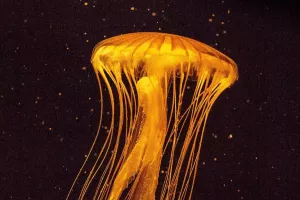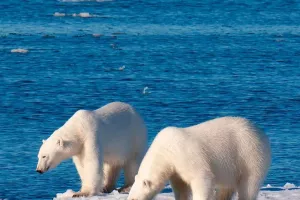Oceans cover more than 70% of the earth. It is the source of our life. Thanks to the density of sea water, the depth and temperature of the ocean, etc., countless magical creatures that are different from other animals on land have been bred in the ocean. Here is a list of the biggest animals in the sea.
1. Blue Whale
The blue whale is a marine mammal belonging to the suborder baleen whales, with four subspecies in total. The blue whale is thought to be the largest animal known to have ever lived on Earth, reaching a length of 33 meters and a weight of 181 tons. The blue whale has a slender body and a bluish-grey back, although it can sometimes appear lighter in the water. Like other baleen whales, blue whales feed primarily on small crustaceans and small fish, sometimes including squid. Usually blue whales need to forage in the waters at a depth of more than 100 meters during the day, and only come to the surface to feed at night.
2. Fin Whale
The fin whale is an aquatic mammal in the genus baleen whale. It is the second largest whale in the world and the second largest animal in existence, second only to the blue whale. distributed in Antarctic waters. The fin whale body is spindle-shaped, about 25 meters long and weighs about 70 tons. Solitary or 2 to 3 live together, migrating to cold waters in summer for bait, and winter to warm waters to breed, food is small crustaceans such as krill, mysids, copepods, and also eats herring, saury, hairtail and other gregarious fish.
3. Bowhead Whale
The bowhead whale, named after its huge and distinctive bow-shaped head, is a marine mammal belonging to the order Cetacean, reaching a length of 21 meters and a very heavy body. The blubber is 70 cm thick and helps keep out the cold. It digs holes for itself. Its long baleen acts like a sieve to filter out plankton such as krill. Bowhead whales are slow swimmers, usually solitary or in small groups of up to six. Bowhead whales occasionally leap into waves, tails, pectoral fins, and peeps, but once they do, they may be recorded continuously. Bowhead whales usually do it alone, typically by leaping vertically out of the water, usually keeping the rear half of the body in the water, and finally entering the water sideways.
4. Whale Sharks
Whale sharks are huge, with a total length of up to 20 meters, making them one of the largest fish in the world. Whale sharks are covered with pale spots and crisscrossed pale bands like a checkerboard, and the nostrils are located on either side of the upper lip and appear in the mouth. Whale sharks are active filter feeders that use their sense of smell to attack targets such as plankton or fish. Whale sharks do not need to swim forward when feeding, and they are often observed to bob up and down to suck in seawater and expel it for food. This is the exact opposite of basking sharks, which are gentle filter feeders and don't suck in seawater, instead they swim to force seawater through their gills.
5. Giant Squid
The giant squid is one of the largest known invertebrates in the world, with a body between 18 and 20 meters. The giant squid lives in the deep sea, resting in the deep sea during the day, and swimming to the shallow sea at night to forage, feeding on fish and catching prey in the dark sea water. It often has to fight to the death with sperm whales that dive into the deep sea for food. Sperm whales are often scarred, but remnants of giant squid have been found in the stomachs of sperm whales. People have not seen giant squid in their habitat, and they can only learn something about these animals from those who float to the surface after death or injury or are washed ashore by the sea.


